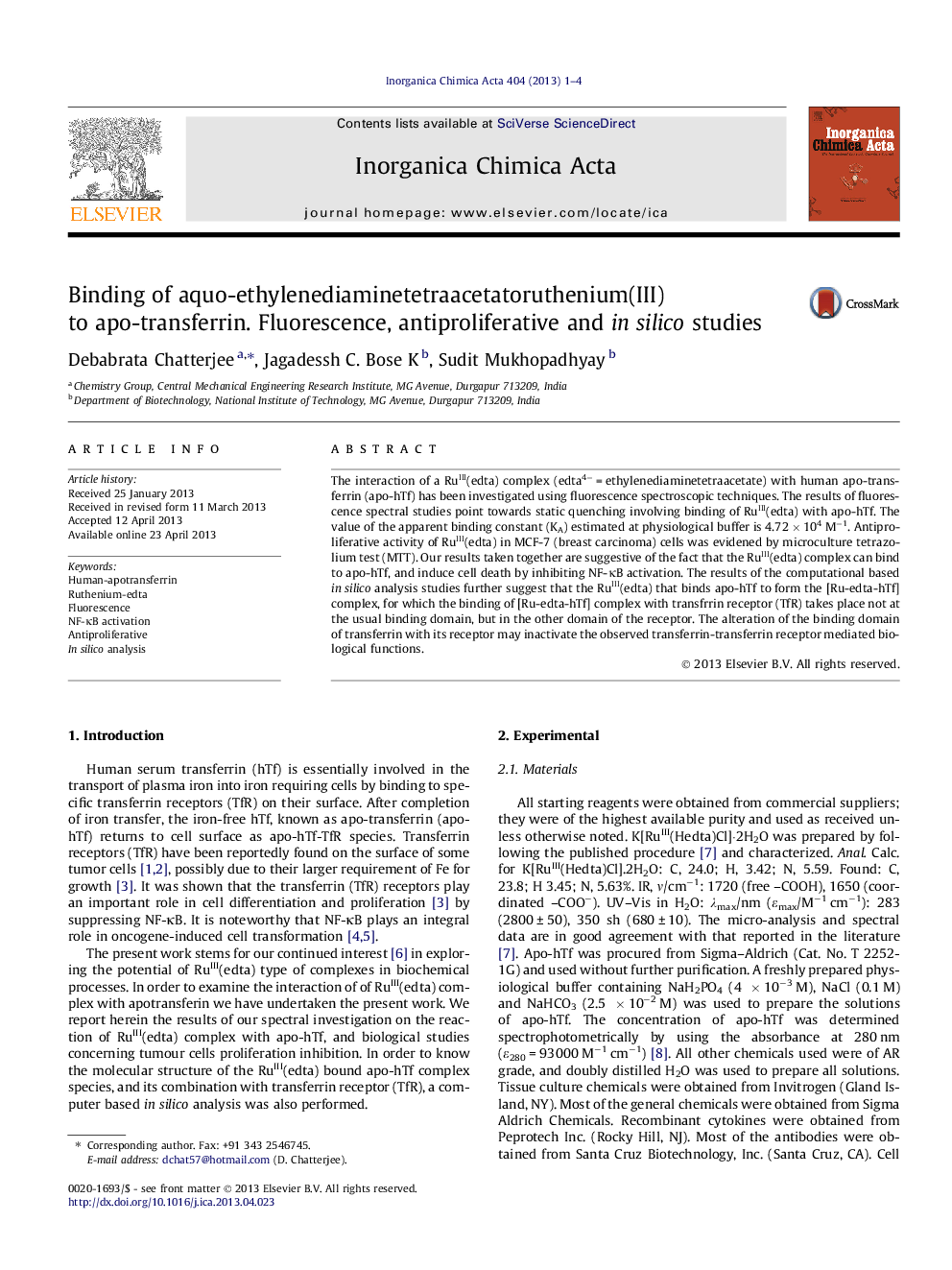| Article ID | Journal | Published Year | Pages | File Type |
|---|---|---|---|---|
| 1312295 | Inorganica Chimica Acta | 2013 | 4 Pages |
The interaction of a RuIII(edta) complex (edta4− = ethylenediaminetetraacetate) with human apo-transferrin (apo-hTf) has been investigated using fluorescence spectroscopic techniques. The results of fluorescence spectral studies point towards static quenching involving binding of RuIII(edta) with apo-hTf. The value of the apparent binding constant (KA) estimated at physiological buffer is 4.72 × 104 M−1. Antiproliferative activity of RuIII(edta) in MCF-7 (breast carcinoma) cells was evidened by microculture tetrazolium test (MTT). Our results taken together are suggestive of the fact that the RuIII(edta) complex can bind to apo-hTf, and induce cell death by inhibiting NF-κB activation. The results of the computational based in silico analysis studies further suggest that the RuIII(edta) that binds apo-hTf to form the [Ru-edta-hTf] complex, for which the binding of [Ru-edta-hTf] complex with transfrrin receptor (TfR) takes place not at the usual binding domain, but in the other domain of the receptor. The alteration of the binding domain of transferrin with its receptor may inactivate the observed transferrin-transferrin receptor mediated biological functions.
Graphical abstractAquo-ethylenediaminetetraacetatoruthenium(III) complex binds to apo-hTF, and plausibly by alters of the binding domain of transferrin with its receptor which could be of significance with regard to the observed antiproliferative activity of the ruthenium complex.Figure optionsDownload full-size imageDownload as PowerPoint slide
